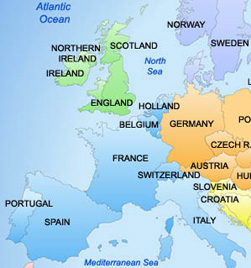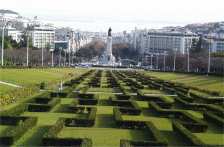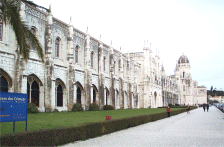| Lisbon, Portugal | Lisbon Postcards | Venue |
 |
Known for its sunny beaches, Porto wine, or typical Fado music, Portugal is a chosen destination for many holidaymakers, an ideal place for practicing water sports and playing golf, offering modern tourism facilities. A member-country of the European Union since 1986, it currently enjoys a steady economic growth. For centuries Portugal has kept this greatest treasure: a renowned reputation of hospitality that makes the country a haven of congeniality and safety. The history of this geographical area is rather long, spanning from the Palaeolithic period 7000 BC into the dawn of civilization. At the end of the Neolithic period, starting 1200 BC and for almost 2500 years, the Phoenicians, the Greeks, the Carthaginians, the Romans, the Visigoths and the Arabs successively invaded and settled in the Iberian Peninsula. The latter remained in control until the 11th century when Ferdinand, ruler of the kingdom of Leon and Castile, conquered much of the territory. An independent kingdom since 1143, Portugal established its continental frontiers in 1297 and is one of the oldest nations in Europe. Portugal became a major player in Europe at the age of the discoveries in the 15th century, when it developed and mastered the nautical science and discovered new lands, setting new trade routes to as far as India and Japan.
The monarchy was overthrown in 1910 by republican forces. A stable democracy started in 1975. You may find here additional information about Portugal.
 |
Lisbon is one of the most ancient cities in the western Europe. Probably inhabited since the Neolithic period, it was settled by Phoenicians in 1200 BC, who named it Alis Ubbo (calm port). They prospered for more than 600 years until it was occupied by Greeks and Carthaginians, then by the Romans in 205 BC, by the Barbarians in the 5th century AC, by the Arabs in 715 AC, till it was finally conquered by D. Afonso Henriques during the Cruzades in 1147, and declared capital of the Portuguese kingdom in 1252. The city name evolved with each new occupant until its present form Lisboa.
Being already an important city when conquered in 1252, it continued growing its importance. In 1260 the King Afonso III transferred his court there from Coimbra. The University of Lisbon was founded in 1292.
 |
From the 18th century, after the destruction of the city by the earthquake of 1755, Lisbon gradually took its modern lines as new, wider streets with rectilinear lines sprang up alongside the old quarters, to be joined in the 19th and 20th centuries by the Avenidas Novas (new avenues) and setting the shape of the city of today. More about Lisbon in the following link.